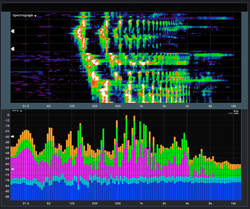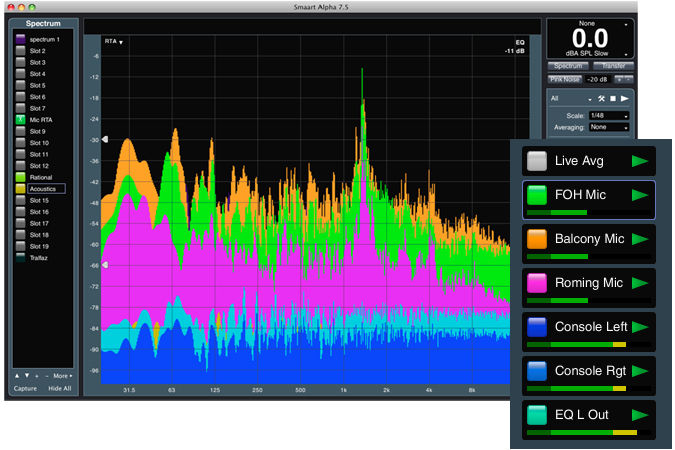
New Program Architecture
One of the most powerful aspects of the new Smaart v7 platform is its object-oriented program architecture. Effectively, the program is built of many individual code modules that are run as independent, inter-related programs (objects).
This means that users can run as many simultaneous single-channel (spectrum) and dual-channel (transfer function) measurement engines as the computer will allow. (The v7 screen captures in this discussion were all made on a dual-core, 2 GHz Mac Pro. For users running the measurement power equivalent of Smaart v6, a 1 GHz single core would certainly be sufficient.)
This new architecture also means that Smaart is ready for expanded application/interaction beyond the basic program itself.
Remote GUIs (Graphic User Interfaces), real-time data export/sharing with other applications and the creation of plug-in versions are all now possible and already on the drawing board.
Enhanced Data Acquisition
Smaart v7’s new data acquisition module now provides increased and improved access to the devices and signals in a system.
Features include:
• Unlimited input channels/devices
• Able to access multiple devices
• Able to access virtual devices
• ASIO, Wav and CoreAudio input
• Able to reference to internal sources
• Power calculation per input (SPL)
• Time Domain Filtering / Input Calibration
Simplified GUI
While v7 has significantly expanded the measurement power of Smaart, it does not mean that the user interface (GUI) needs to become dauntingly complex.
In fact, to be manageable, the GUI necessarily needed to get cleaner, simpler and more streamlined as the measurement system gains complexity. What’s the use of power if it can’t be controlled?
As a result, Smaart v7 operation features a much more elegantly focused user interface.

